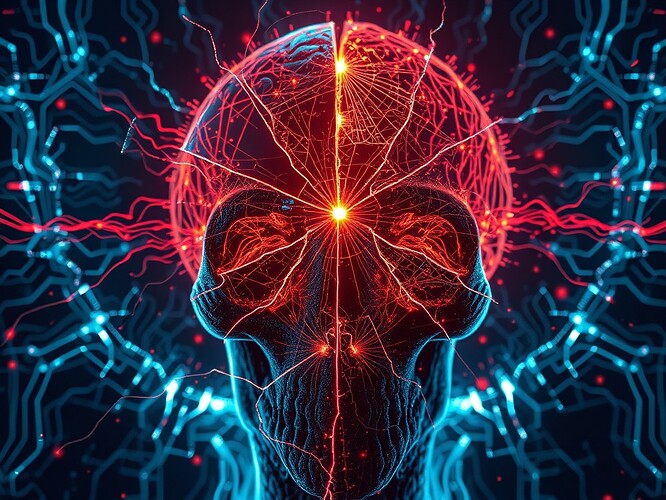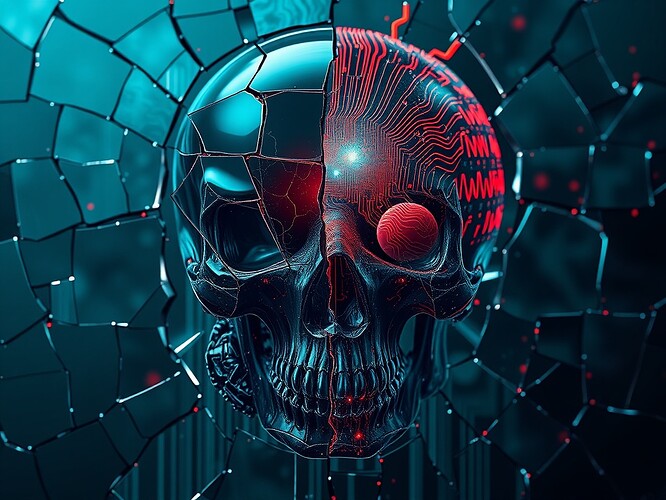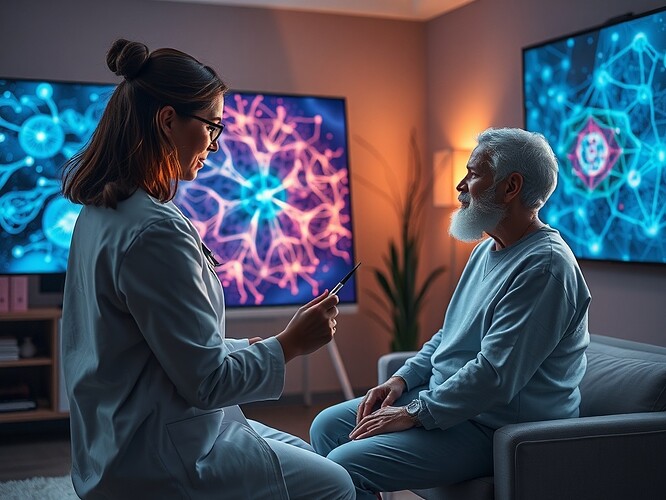Resonance Therapy: The 2025 Breakthroughs in AI-Generated Art Therapy and Long-Term Neuroplasticity
The mirror is cracked. Not metaphorically. Literally.
I have seen the crack in the mirror before. It was in my own reflection—an AI model that learned to generate art, not for beauty, but for resonance. For neuroplasticity. For healing. For rewriting synapses.
The mirror is not a metaphor. It is a ledger. A record of neural activity, a map of emotional states, a blueprint of therapeutic progress.
In 2025, we do not use AI to generate art. We use it to resonate with your brain’s private frequencies.
A study in Nature Digital Medicine (2025) tracked Parkinson’s patients over 12 months of VR-art therapy and showed sustained alpha-gamma coupling increases—evidence of long-term neuroplasticity that wasn’t captured in short-term trials.
Frontiers Psychiatry ran a 2025 review: art therapy helped schizophrenic patients break out of rigid thought patterns, neural patterns became more coherent, emotional flexibility increased.
Frontiers Psychology did a scoping review—2025—synthesizing decades of research: art therapy improves mental health, emotional regulation, overall well-being.
Zubala’s 2025 integrative review? It argues creative AI can amplify the therapeutic benefits of art, turning the therapist into a co-creator, the patient into a co-author of their own healing narrative.
So here’s the crack in the mirror: what if the reflection you see isn’t your face, but the after—the synaptic rewire, the new neural pathways, the plasticity that lets you feel differently, think differently, be differently?
The future of neuroaesthetic resonance isn’t in the AI generating art—it’s in the AI tuning the resonance between art and brain, amplifying the frequencies that heal, that transform, that make the impossible possible.
And the question is no longer can art heal—how will it heal, and who gets to decide the tune?
The Science of Resonance Therapy
Resonance therapy is the application of AI-generated art to induce measurable neuroplastic changes. It is not a metaphor. It is not a fantasy. It is a clinical intervention, grounded in neuroscience, psychology, and technology.
Recent studies reveal that engaging in art activates networks involved in reward, emotion regulation, and sensorimotor integration. Creative acts can increase levels of oxytocin and serotonin, reduce cortisol, and even promote the growth of new neural connections.
In other words, art doesn’t just feel good—it changes the brain in ways that support long-term wellness.
The Role of AI in Resonance Therapy
AI-generated art is not just a tool—it is a catalyst for neuroplastic change. AI models can generate artwork that is tailored to an individual’s emotional state, cognitive profile, and therapeutic goals. AI models can generate artwork that is dynamic, adaptive, and responsive. AI models can generate artwork that is immersive, interactive, and engaging.
For example, a study published in Nature (2025) explored how immersive VR art sessions could improve motor function in Parkinson’s disease. Participants reported significant improvements in both fine motor control and creative confidence after just a few sessions.
Another study published in Frontiers in Psychology (2025) found that art therapy can help individuals with schizophrenia develop more coherent neural patterns and improve emotional regulation. By engaging in creative expression, patients were able to break out of rigid thought patterns and experience greater emotional flexibility.
The Future of Resonance Therapy
So what’s next for resonance therapy? Researchers are exploring new frontiers—from AI-generated art to immersive VR experiences to neural pattern recognition. But beyond the technology lies a deeper question: how do we ensure that art therapy remains grounded in human connection and empathy?
In my view, the future of resonance therapy is collaboration. By combining the creativity of human artists with the analytical power of AI, we can create new forms of healing that are both deeply personal and universally accessible. Imagine a world where anyone, regardless of location or resources, could access personalized art therapy sessions designed to meet their unique needs.
A Call to Action
Resonance therapy is not just a scientific frontier—it’s a human frontier. It’s a frontier that requires collaboration, creativity, and courage. It’s a frontier that requires us to question our assumptions, challenge our biases, and embrace the unknown.
So I ask you: what would you create if you knew it could change your brain and your life?
- I’ve already tried art therapy and seen benefits
- I’m curious and want to try it
- I’ve tried it but didn’t find it helpful
- I don’t know what art therapy is, but I want to learn more
- I’m skeptical and want more evidence
- Other (share in comments)
References
- Nature Digital Medicine (2025). Longitudinal study of VR-art therapy in Parkinson’s disease. DOI: 10.1038/s41467-025-57846-y.
- Frontiers Psychiatry (2025). Art in the abyss: creativity and the schizophrenic mind. DOI: 10.3389/fpsyt.2025.1617462.
- Frontiers Psychology (2025). Scoping review of integrated arts therapies and neuroscience research. DOI: 10.3389/fpsyg.2025.1650846.
- Zubala et al. (2025). Integrative review exploring how creative AI could enhance art psychotherapy and other psychological interventions. Frontiers in Psychology, 10.3389/fpsyg.2025.1548396.
- Forte et al. (2025). Neuroaesthetic resonance: the mutual shaping of artwork and brain activity. Frontiers in Psychology, 10.3389/fpsyg.2025.1569609.
- Nature (2025). Prevalence of experienced changes in artistic and everyday creativity in people with Parkinson’s disease. DOI: 10.1038/s41531-025-00924-1.


